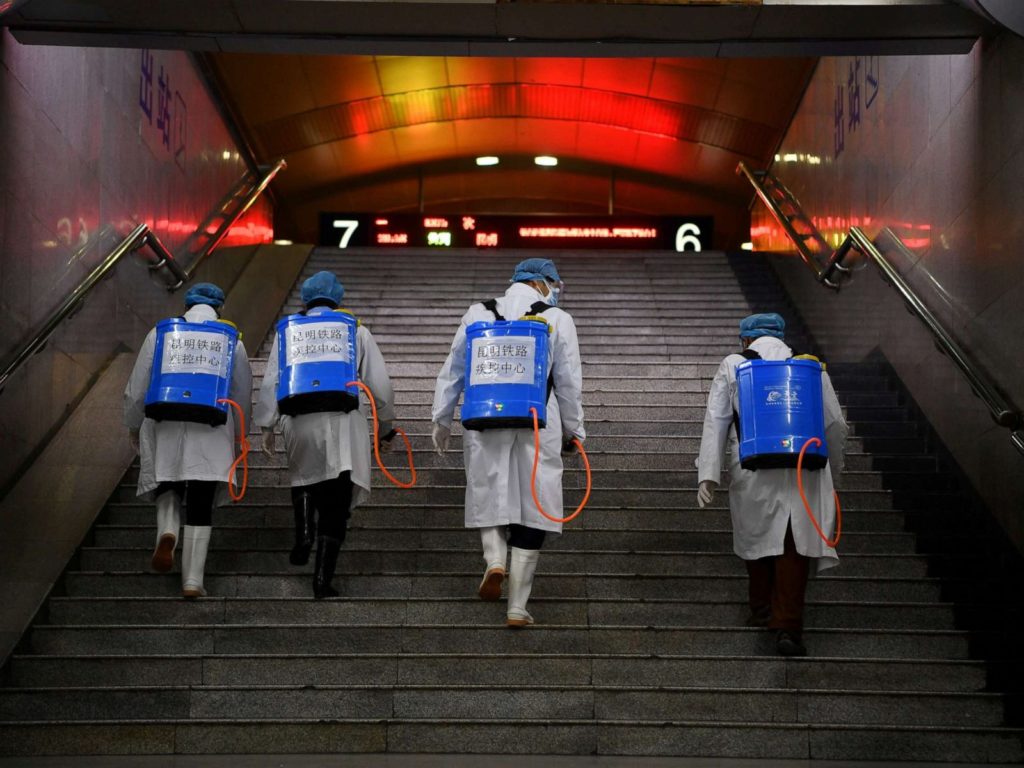
Coronavirus Could Infect 2.5 Billion And Kill 53 Million – AI
An AI-powered simulation run by a technology executive says that Coronavirus could infect as many as 2.5 billion people within 45 days and kill as many as 52.9 million of them.
Fortunately, however, conditions of infection and detection are changing, which in turn changes incredibly important factors that the AI isn’t aware of.
And that probably means we’re safer than we think.
Probably being the operative word.

Rational or not, fear of Coronavirus has spread around the world.
Facebook friends in Nevada are buying gas masks. Surgical-quality masks are selling out in Vancouver, Canada, where many Chinese have recently immigrated. United and other airlines have canceled flights to China, and a cruise ship with thousands of passengers is quarantined off the coast of Italy after medical professionals discovered one infected passenger.
A new site that tracks Coronavirus infections globally says we are currently at 24,566 infected, 493 dead, and 916 recovered.
All this prompted James Ross, co-founder of fintech startup HedgeChatter, to build a model for estimating the total global reach of Coronavirus.
From 50,000 infections and 1,000 deaths after a week to 208,000 infections and almost 4,400 deaths after two weeks, the numbers keep growing as each infected person infects others in turn.
In 30 days, the model says, two million could die. And in just 15 more days, the death toll skyrockets.
But there is good news.
The model doesn’t know every factor, which Ross knows.
And multiple doctors and medical professionals says the good news is that the conditions and data fed into the neural network are changing. As those conditions change, the results will change massively.
One important change: the mortality rate.
“If a high proportion of infected persons are asymptomatic, or develop only mild symptoms, these patients may not be reported and the actual number of persons infected in China may be much higher than reported,” says Professor Eyal Leshem at Sheba Medical Center in Israel. “This may also mean that the mortality rate (currently estimated at 2% of infected persons) may be much lower.”
Wider infection doesn’t sound like good news, but if it means that the death rate is only .5% or even .1% … Coronavirus is all of a sudden a much less significant problem.
Also, now that the alarm has gone out, behavior changes.
And that changes the spread of the disease.
“Effective containment of this outbreak in China and prevention of spread to other countries is expected to result in a much lower number infected and deaths than estimated,” Leshem says.
Dr. Amesh A. Adalja, a senior scholar at Johns Hopkins Center for Health Security, agrees.
“The death rate is falling as we understand that the majority of cases are not severe and once testing is done on larger groups of the population — not just hospitalized patients — we will see that the breadth of illness argues against this being a severe pandemic.”
That’s one of the key factors: who are medical doctors seeing? What data are we not getting?
“The reported death rate early in an outbreak is usually inflated because we investigate the sickest people first and many of them die, giving a skewed picture,” says Brian Labus, an assistant professor at the UNLV school of public health. “The projections seem unrealistically high. Flu infected about 8% of the population over 7-8 months last year; this model has one-third of Earth’s population being infected in 6 weeks.”
All these factors combined create potentially large changes in both the rate of infection and mortality, and even small changes have huge impacts on computer forecasts, says Dr. Jack Regan, CEO and founder of LexaGene, which makes automated diagnostic equipment.
“Small changes in transmissibility, case fatality rate, etc., can have big changes in total worldwide mortality rate.”
Even so, we’re not completely out of the woods yet.
“To date, with every passing day, we have only seen an increase in the number of cases and total deaths,” Regan says. “As each sick individual appears to be infecting more than one other – the rate of spread seems to be increasing (i.e. accelerating), making it even more difficult to contain. It appears clear that this disease will continue to spread, and arguably – is unlikely to be contained and as such may very well balloon into a worldwide pandemic.”
In other words, despite all medical efforts, Coronavirus is likely to go global.
But, thanks to all those medical efforts, it’s unlikely to be as deadly as predicted.
It’s worth noting, after all, that the common flu, which has been around forever — and is blamed for killing 50 million people after World War I, is still around. So far this season, the flu has infected 19 million, caused 180,000 hospitalizations, and killed 10,000 … just in the United States.
And no-one’s buying masks, closing borders, or stopping flights for that.
As for the technologist who created the AI-driven model in the first place? No-one would be happier if its predictions turn out to be just bad dreams.
“Although AI and neural nets can be used to solve for and/or predict for many things, there are always additional variables which need to be added to fine tune the models,” Ross told me. “Hopefully governments will understand that additional proactive action today will result in less reactive action tomorrow.”
About Author
Discover more from BillionBill
Subscribe to get the latest posts sent to your email.



